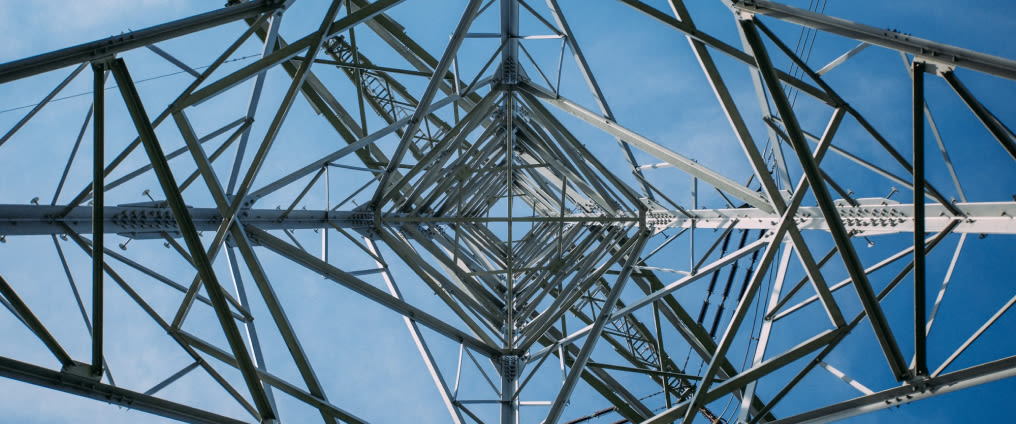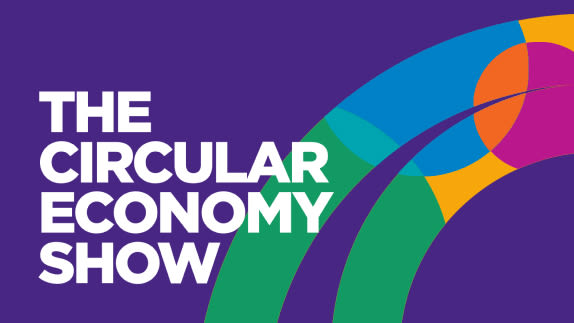As the renewable energy sector grows, high-capacity long-life battery storage is fundamental to its success. How these batteries are designed and made will define their environmental impact for generations to come. Creating a circular economy for batteries is crucial to prevent one of the solutions to the current environmental crisis becoming the cause of another.
The renewable energy sector is growing at an exponential rate. In 2020, for the first time, renewables have generated more electricity in the UK than fossil fuels and according to the International Energy Agency solar energy is now the “cheapest electricity in history”. Yet while the capacity of the renewable energyrenewable energyEnergy derived from resources that are not depleted on timescales relevant to the economy, i.e. not geological timescales. sector is strengthening, renewables still only account for 11% of the world’s primary energy. This is just twice the proportion provided by renewables more than 50 years ago, and with the UN expecting an overshoot of the Paris Agreement 2030 targets — nearing 32 billion tonnes of CO2 emissions — the pace of the transition to renewables needs to be accelerated.
Overcoming barriers to renewable energy
There have been many barriers to the renewable energy transition. Over the years, economic obstacles have included subsidies for non-renewable energy, low oil prices that have limited investment in renewables, and the cost of infrastructure development. Social barriers have also limited progress, including public reservations about changes to local landscapes and disruptions to established ways of life. While these barriers are persistent, international pressure and awareness of the negative impacts of fossil fuel-based energy are catalysing government action to decarbonise the energy sector. The EU’s European Green Deal, for example, sets out a plan for net zero greenhouse gas emissions by 2050, and China is taking steps to achieve carbon neutrality by 2060.
With policymakers setting a course for change, renewables are receiving new investment. In October 2020, the Financial Times reported that stocks in hydrogen energy equipment manufacturer ITM Power had risen by 220% while Dutch energy storage company Alfen jumped more than 230%. Meanwhile, multinational oil and gas corporation ExxonMobil, which once had the world’s biggest equity value, has been overtaken by Florida-based ‘clean energy’ provider NextEra Energy in terms of stock market value.
Investments in renewables are also being made by some of the Big Oil companies. Total has committed to a significant solar project in Qatar while ENI SpA has pledged to lower its greenhouse gas emissions by 80% by 2050. Swiss commodity trader Mercuria is also investing USD 1.5 billion into renewable energy projects in North America with private equity partners. And BP’s decision to write down around USD 17.5 billion worth of assets on the basis that they are “no longer economic” could be a game changer in the energy sector.
However, despite these big steps forward, a fundamental technical barrier remains: energy storage. As Dr Amrit Chandan, CEO of lithium-ion battery technology company Aceleron, notes: “Renewables are intermittent, meaning that they need the support of batteries to store clean energy for use when the sun isn’t shining and the wind isn’t blowing. Battery storage is vital.”
Battery development
High-capacity long-life battery development is particularly important for the utility and transport sectors. A key enabler of their success is likely to be the lithium-ion battery — most commonly used for small-scale applications like phone chargers but increasingly being developed for larger-scale applications. Seven European countries have already committed EUR 3.2 billion to support research into lithium-ion batteries, and both Tesla and General Motors are investing billions of dollars in manufacturing facilities for the technology.
However, with these developments comes a fresh challenge for the energy sector. As Chandan comments:
We cannot allow ourselves to sleepwalk into another environmental crisis in the form of e-waste. With the global energy storage market forecast to grow ten times, to USD 546 billion, by 2035, it is now more vital than ever for battery manufacturers to prioritise designing out waste.
Battery waste is an elephant in the room when it comes to the renewable energy transition. By 2030, there could be 11 million tonnes of lithium-ion battery waste from electric vehicles alone — enough to fill London’s Wembley Stadium almost 20 times over. Combined with the growth of renewable energy for utilities, as well as other battery-driven devices, this adds up to a large and growing problem that needs to be managed.
Designing out battery waste
Lithium-ion batteries are currently designed and sold in ways that mean they are difficult to repairrepairOperation by which a faulty or broken product or component is returned back to a usable state to fulfil its intended use., remanufactureremanufactureRe-engineer products and components to as-new condition with the same, or improved, level of performance as a newly manufactured one., and recyclerecycleTransform a product or component into its basic materials or substances and reprocessing them into new materials.. As Chandan explains, they are “traditionally welded or glued together, making individual components difficult to replace. If one part fails, the whole battery is usually thrown away — often with more than 80% of its potential life left unused.”
Two important issues are raised here: first, batteries with most of their charging capacity remaining are being discarded rather than used; and second, the valuable materials that are used to make these batteries are being lost from the economy. With a shortage of lithium possible as soon as 2025, this could be a major barrier to the uptake of renewable energy.
Extending battery life
To ensure that batteries are used to their full potential and don’t become waste, collaboration across industries and between businesses and policymakers, as well as a rethinking of battery ownership, is needed.
In the EU, for example, the Waste Framework Directive currently defines reusereuseThe repeated use of a product or component for its intended purpose without significant modification. of an item as “any operation by which products or components that are not waste are used again for the same purpose for which they were conceived.” For batteries, this definition needs to be revisited; while automotive batteries lose 20–30% of their storage capacity after 8–10 years and can no longer be used in cars, they can be used, as Chandan notes, “as back-up batteries, for applications in data centres and elsewhere as this doesn’t require the same battery capacity.”
In addition to a review of the definitions of reuse, for it to happen in practice requires effective resale markets to be established or for the manufacturer to retain ownership of the batteries so that they can be passed between multiple users. Manufacturers retaining ownership of batteries is also a model that can increase the likelihood of repair and remanufacturing.
Aceleron’s lithium-ion battery has been designed to facilitate the easy replacement of components, extending the life of its batteries. Coupled with advanced analytics that can detect which components need servicing, this means the batteries are expected to function for up to 25 years with appropriate maintenance, more than double the lifespan of traditional lithium-ion batteries.
With similar motivations, car manufacturer Renault has established a rental model for the lithium-ion batteries in its electric cars so that they can be reused and remanufactured when customers return them. Jean-Philippe Hermine, Director of Strategy and Environmental Planning at Groupe Renault, commented:
"Batteries help us respond to an issue that’s existed for years in the energy sector: namely, that of storage. [Now] the goal is to help regenerate raw materials and reuse them to make new batteries. Over time, this would help lower their cost while securing supply, which will help minimise the carbon impact produced by mining. This is the model we’re working towards.
Electric cars like Renault’s will also play a key role in the broader transition to renewable energy by harnessing more of the potential of battery technology. A study by the European Climate Foundation together with representatives of the automotive and electromobility industry, battery makers, the energy sector, and French institutions and NGOs found that when an electric vehicle is parked and connected to the grid it is able to export energy from its battery. Called vehicle-to-grid systems, they can meet peaks in electricity demand, help manage overloads, and absorb surplus energy from renewable sources.
Developing this relationship between utilities and electric cars has the potential to accelerate the renewable energy transition in both sectors. For example, on the Portuguese island of Porto Santo, Hitachi ABB Power Grids and Renault have partnered to integrate renewable energy into the island’s grid by leveraging electric vehicle batteries. Vehicle-to-grid technology is complemented by an aggregation platform to create an energy ecosystem which will see Porto Santo become one of the world’s first smart fossil-fuel-free islands.
Recycling battery components
While new business models, cross-sector collaboration, and battery design can facilitate the reuse and remanufacturing of batteries, a further challenge is posed: recycling their materials. This is crucial to avoid the discharge of toxic metals and materials from discarded batteries into the environment, polluting soil and water.
A 2018 study by Google and the Ellen MacArthur Foundation — which assessed the circular economycircular economyA systems solution framework that tackles global challenges like climate change, biodiversity loss, waste, and pollution. It is based on three principles, driven by design: eliminate waste and pollution, circulate products and materials (at their highest value), and regenerate nature. solutions for both lead-acid and lithium-ion batteries — found that there are technical difficulties associated with recycling lithium-ion batteries and the cost to do so is currently significant. However, there is a big incentive to recover cobalt, and other materials, from batteries and large recycling centres have been established in Belgium and Canada for this purpose.
Earlier this year, chemical company Solvay and utilities business Veolia announced their partnership to create a circular economy consortium for critical metals used in lithium-ion batteries for electric cars. Veolia already operates a recycling plant in France, Euro-Dieuze Industrie, for electric vehicle batteries, based on an in-house hydrometallurgical process for selective extraction of metals. The partnership with Solvay — which brings expertise to optimise the extraction and purification of critical metals such as cobalt, nickel, and lithium — aims to allow the metals to be reused as raw materials to produce new batteries.
Ilham Kadri, CEO of Solvay, said of the project: “Solvay’s unique know-how combining Specialty Polymers, Composites, and Mining solutions, together with Veolia’s unique experience in waste management, is a fantastic opportunity to build a greener battery ecosystem.”
Veolia Chairman and CEO Antoine Frérot added: “The recycling of electric vehicle batteries and the management of the pollutants they contain are major ecological and industrial challenges. By partnering, Veolia and Solvay help develop the recycling value chain and the production of strategic raw materials for the production of new batteries.”
Enabling policies
For private sector initiatives such as these to be successfully scaled requires the support of policymakers. The European Commission has already acknowledged that policymakers need to look closely at the opportunities and challenges facing industrial clusters and ecosystems, which go beyond traditional industry sectors to encompass all players operating in a value chain — from SMEs to multinational companies — each bringing their own expertise and innovation skills.
A good example is the European Battery Alliance, which brings together more than 120 European and non-European stakeholders representing the entire battery value chain. When implementing a circular economy approach, such alliances could be used to help steer efforts and finance large-scale projects, helping to remove barriers to innovation and improve policy coherence in key areas.
The European Commission’s Circular Economy Action Plan notes that a new regulatory framework for batteries will be proposed, building on the evaluation of the Batteries Directive, which focuses on battery waste and draws on the work of the European Batteries Alliance. One of its key focuses will be to “ensure the recovery of valuable materials.” The evaluation of the Batteries Directive could also lead to necessary changes to waste regulations and the notion of ‘waste’ itself. In the European Waste Catalogue, for example, which provides a list of waste descriptions, there is no entry for lithium batteries. However, because of its flammability, lithium can prove hazardous and therefore needs to be handled appropriately.
Through an Innovation Deal on Circular Economy, the European Commission has offered an opportunity for businesses to put forward recommendations to improve the legislative framework for the large-scale use and reuse of electric vehicle batteries, the development of vehicle-to-grid services, and second life electric vehicle battery applications. Some of the issues raised by the Innovation Deal members have already informed the consultation on the revision of the EU Battery Directive.
The potential of a circular economy for batteries
If technical hurdles can be overcome and supportive regulations put in place, establishing a circular economy for batteries could have a huge impact across the world, and particularly in emerging markets. Globally there are 840 million people who live without access to power and many developing countries are exploring the option of mini-grids as a key enabler of decarbonised energy. Mini-grids are small, closed-loop energy systems, centred around distributed and renewable energy sources, like solar panels. With the aim to optimise mini-grids, UK-based energy companies, including Aceleron, are undertaking the Energy Catalyst project, conducting field studies on how maintainable batteries can embed resilience into such energy systems.
Another potential large-scale use for batteries in a circular economy is support for back-up power systems in data centres and telecommunications infrastructure, ultimately supporting the foundations of the internet, connectivity, and communications. Many operators are now turning to lithium-ion batteries thanks to their ability to operate in this environment without the need for cooling. Battery technology is vital in this industry to provide an uninterrupted power supply that protects networks from unexpected outages and offers greater resilience across digital infrastructure.
A circular economy is underpinned by a transition to renewable energy. Two of its principles are to eliminate waste and pollution and to keep products and materials in use. Applying these principles to batteries not only ensures valuable and finite materialsfinite materialsMaterials that are non-renewable on timescales relevant to the economy, i.e. not geological timescales. like lithium are circulated in the economy, but also helps make the energy transition, and meeting net zero emissions targets, possible.






